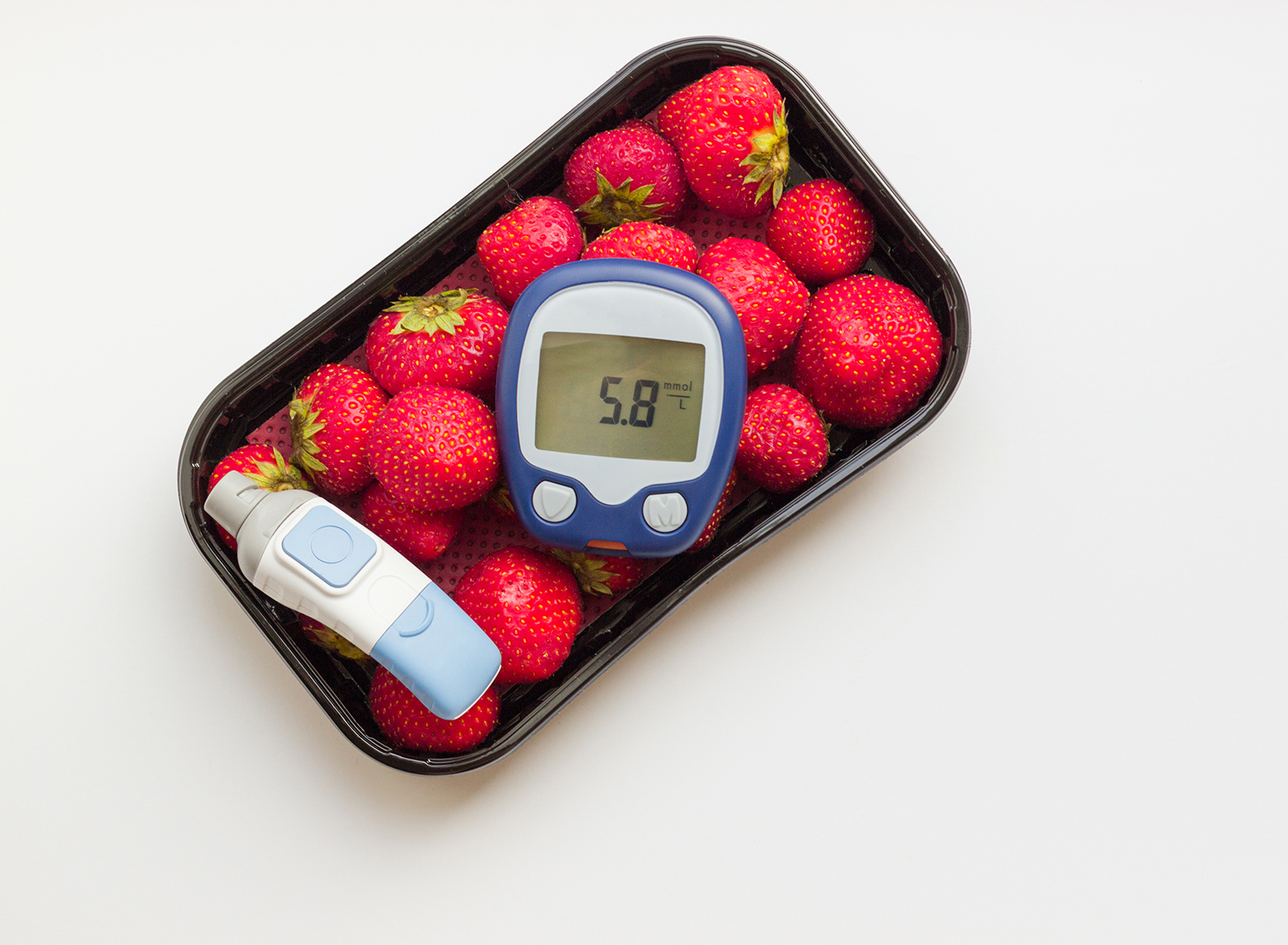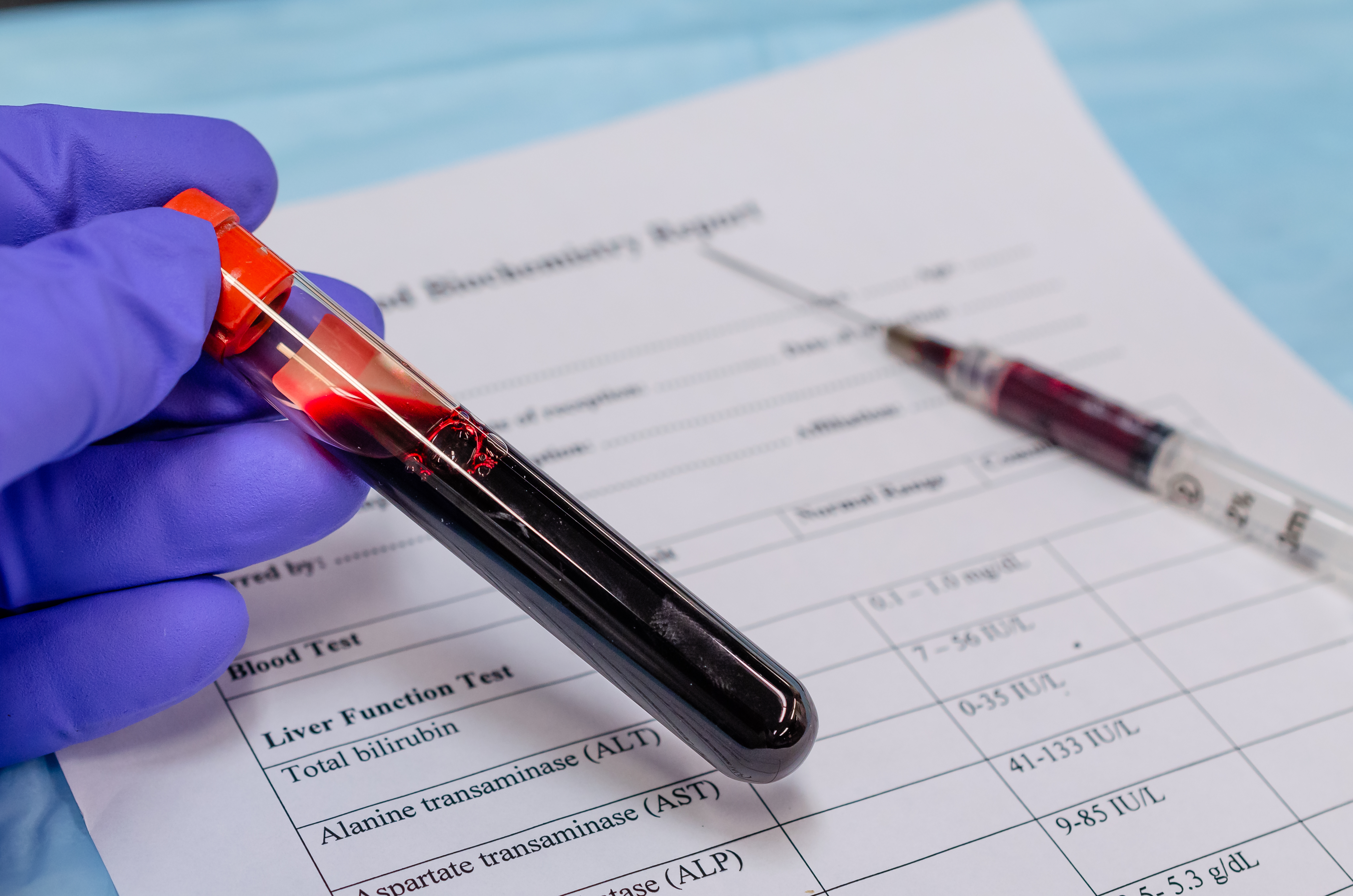Targeted Therapy for Advanced Colorectal Cancer
Axel Grothey, MD:
TAPUR: An ongoing multicenter, nonrandomized, open-label phase II basket trial evaluating antitumor activity of commercially available targeted agents in advanced/metastatic cancers with specific genomic alterations and no remaining treatment options. At ASCO GI 2020, data from patients in this study with advanced colorectal cancer (CRC) with 3 specific genetic profiles and related targeted treatments were presented: those with BRAF V600E–mutated disease who received vemurafenib (a BRAF inhibitor) plus cobimetinib (an MEK inhibitor) (n = 30), those with disease harboring an ERBB2 amplification/overexpression who received trastuzumab plus pertuzumab (n = 28), and those with high tumor mutational burden (≥ 9 mutations/Mb) who received pembrolizumab (n = 27). Most patients in these cohorts had received ≥ 3 previous systemic regimens.
Key findings:
In the BRAF V600E mutation cohort, vemurafenib plus cobimetinib induced responses in 8 patients (29%) with very interesting median PFS and OS findings (15.8 and 38.9 weeks, respectively). For the ERBB2 group, trastuzumab plus pertuzumab treatment was associated with a 25% response rate and a median OS of 108 weeks; this OS finding was remarkable and confirms that many ERBB2‑amplified/overexpressing CRCs do respond well to HER2‑targeted therapy. Finally, for the group with high tumor mutational burden, pembrolizumab induced a response in 11% of patients, with a median OS of 51.9 weeks observed. In all 3 cohorts, disease control was achieved in ≥ 7 patients; as such, the study met its primary endpoint and each treatment was deemed worthy of further study within the corresponding patient population.
My key take-aways and clinical implications:
This study is of great interest and will be highly informative because targeted agents are frequently used off label in patients with metastatic CRC. Currently, we engage compassionate-use pathways to obtain these agents for patients who have specific molecular alterations.
As noted, these patients were heavily pretreated. In terms of clinical outcomes, it was quite interesting that there were responses in a substantial proportion of patients and disease control was achieved in each of the 3 different cohorts. These results confirm that it does make sense to molecularly profile patients with advanced CRC and consider targeted agents for those with specific profiles. Expectations have to be tempered in the sense that the majority of patients will not respond to targeted agents despite a potentially actionable molecular profile, but as noted by findings here, there are patients who will achieve a response or disease control.
BEACON: A multicenter, randomized, open-label, 3-arm phase III trial that evaluated encorafenib plus cetuximab with or without binimetinib for patients with BRAF V600E–mutant metastatic CRC and progressive disease after 1 or 2 previous regimens. The primary endpoint data (OS and ORR) were presented at ESMO 2019 and subsequently published in the New England Journal of Medicine; at ASCO GI, patient‑reported quality of life (QoL) and updated efficacy data were presented.
Key findings:
As previously reported, both the triplet regimen with encorafenib, binimetinib, and cetuximab and the doublet regimen with encorafenib and cetuximab led to significant improvement of the median OS (triplet: 9.0 vs 5.4 months with control; HR: 0.52; P < .0001; doublet: 8.4 months; HR: 0.60; P = .0003) and ORR (triplet: 26%; doublet: 20%; control: 2%) vs standard of care (irinotecan or irinotecan-based therapy plus cetuximab) in previously treated patients with BRAF V600E–mutant metastatic CRC.
At ASCO GI 2020, key patient‑reported QoL outcomes were reported, as measured by various instruments, including the EORTC QLQ C30, the FACT‑C and the EuroQoL‑5D-5L tools. By each of these measurements, the triplet and doublet regimens improved the median time to QoL deterioration vs control, with HRs ranging from 0.46 to 0.55.
My key take-aways and clinical implications:
The BEACON trial addressed a patient population with unmet needs. These patients with BRAF V600E–mutant CRC in the advanced setting have a very poor prognosis and make up approximately 8% to 12% of the overall CRC patient population. Typically, patients diagnosed with this type of metastatic CRC have a median survival time of approximately 1 year, and patients reaching second-line or third-line treatment have rapid progression.
I think it is very important to look at overall QoL in these studies because it’s not just OS, PFS, and response rate that are important for our patients—it’s also maintenance of QoL. In this study, when we looked at all the QoL parameters that we investigated, the triplet and the doublet were superior compared with the control treatment. We can now tell patients, clearly, that when they’re on these biologically targeted regimens from the BEACON study, their QoL will be maintained longer than with a standard-of-care chemotherapy regimen.
Another key piece of data presented at ASCO GI that was not captured in the abstract was an efficacy comparison between the doublet and the triplet arms. This has been a topic of interest since the initial presentation of the data. Do we always need the triplet? I think use of the doublet could have several advantages: it would be less expensive than the triplet because of the exclusion of binimetinib; the toxicities with the doublet would potentially be lower than with the triplet; and the doublet could be combined with other agents or regimens (chemotherapy or other targeted therapeutics) to inhibit multiple pathways and target resistance mechanisms. At ASCO GI, updated OS data were presented with longer follow up and suggested that the doublet and the triplet perform equally well (median OS for both regimens was 9.3 months after 12.8 months of follow-up, with an HR of 0.95). In my clinic, I’ve adopted the doublet treatment as a standard of care for patients with characteristics similar to those treated in the BEACON study.
Pembrolizumab in Advanced Anal Squamous Cell Carcinoma
Axel Grothey, MD:
KEYNOTE-158: An open-label phase II study of pembrolizumab for advanced solid tumors; at ASCO GI, data were presented on patients with unresectable or metastatic anal squamous cell carcinoma (ASCC) with progression on or intolerance to ≥ 1 line of standard therapy and tumor tissue evaluable for biomarker assay (N = 112). Patients could have any PD-L1 status.
Key findings:
In the overall ASCC population, pembrolizumab treatment was associated with an ORR of 10.7%, with ORRs of 14.7% and 3.3% in patients with PD-L1–positive and PD-L1–negative tumors, respectively. PD-L1 positivity was defined as a PD-L1 combined positive score of ≥ 1. The overall disease control rate was approximately 25%, with 6 patients achieving a CR (all had PD-L1–positive disease). Among those who responded in the overall population (n = 12), the median duration of response was not reached, with 90% still responding at 12 and 24 months. The median PFS and OS were 2.0 and 11.9 months, respectively.
My key take-aways and clinical implications:
Previous studies of nivolumab indicated that PD-1 inhibitors have potential activity in ASCC, which makes sense, because anal cancer is mainly a human papillomavirus–mediated cancer and many virus-mediated cancers appear to be susceptible to immunotherapy. In this study, the overall disease control rate was lower than hoped; however, among the patients who responded, long‑lasting benefit was observed. These data, similar to data from other studies, suggest that PD-L1 expression alone may not identify the subgroup of patients that can most benefit from immune checkpoint inhibitor therapy. Additional research is needed in the relatively rare ASCC patient population.
Atezolizumab Plus Bevacizumab for Advanced Hepatocellular Carcinoma
R. Kate Kelley, MD:
IMbrave150: A multicenter, randomized, open-label phase III trial in which patients with locally advanced or metastatic, unresectable hepatocellular carcinoma (HCC) with no previous systemic therapy received either atezolizumab (an anti‑PD-L1 monoclonal antibody) plus bevacizumab (an antiangiogenic VEGF-targeted monoclonal antibody) or sorafenib monotherapy, which was the standard of care at the time of trial inception (N = 501).
The rationale for the therapeutic combination of atezolizumab plus bevacizumab is that antiangiogenic therapy combined with immune checkpoint inhibition may promote immune responsiveness in the HCC microenvironment and reduce local immune suppression. The primary endpoint data (OS and PFS findings) were presented at ESMO Asia in November 2019; at ASCO GI 2020, exploratory patient‑reported outcome (PRO) endpoints, including time to deterioration of symptoms, QoL, and physical and role functioning were presented
Key findings:
The coprimary endpoint analysis was re-presented at ASCO GI; for OS, the median was not reached for the experimental arm of atezolizumab plus bevacizumab, whereas the median OS for the control arm of sorafenib was 13.2 months. At the time of analysis, this was a significant difference, with an HR of 0.58 and a P value of .0006. It is important to note when reviewing these data, however, that there remained a substantial number of patients who had not yet had an event and were censored; we will need to wait for follow-up data for a more mature analysis of the OS.
For PFS, the median for the combination arm with atezolizumab plus bevacizumab was 6.8 months, compared with 4.3 months for sorafenib, generating an HR of 0.59 (P < .0001). Based on the significant improvements in both coprimary endpoints, the study is positive, indicating superior efficacy of atezolizumab plus bevacizumab vs sorafenib. Notably, the safety analysis also showed that the rates of grade 3/4 and all‑grade adverse events were lower for the combination of atezolizumab plus bevacizumab vs sorafenib.
At ASCO GI 2020, key PROs from IMbrave150 were presented in further detail, including data from questionnaires on QoL, physical and role functioning, and cancer‑related symptoms. The compliance rate for these PRO questionnaires was quite high (≥ 92%) The median times to deterioration for the following PROs for atezolizumab plus bevacizumab vs sorafenib are listed below:
- QoL: 11.2 vs 3.6 months (HR: 0.63)
- Physical functioning: 13.1 vs 4.9 months (HR: 0.53)
- Role functioning: 9.1 vs 3.6 months (HR: 0.62)
The median time to deterioration was also prolonged with atezolizumab plus bevacizumab for various important cancer-related symptoms, including appetite loss, diarrhea, fatigue, jaundice, and pain, using various instruments.
My key take-aways and clinical implications:
The IMbrave150 PRO data presented at ASCO GI 2020 support the robust efficacy results observed with first-line atezolizumab plus bevacizumab vs sorafenib for patients with advanced HCC and reinforces the favorable risk:benefit profile of this new combination. We await updated results of OS with additional follow-up time, as well as further details regarding specific adverse events of interest, including rates of corticosteroid treatment for immune-related toxicity with atezolizumab and rates of hemorrhagic or thrombotic complications, which are known adverse events associated with bevacizumab. This combination has been granted a breakthrough therapy designation by the FDA and is now under review for the treatment of patients with unresectable HCC who have not received previous systemic therapy.
With the encouraging results of the IMbrave150 study, it will be very important to put these PROs into context with those observed with other emerging combinations as these data become available. Novel combinations in randomized phase III studies include the LEAP‑002 trial of first-line pembrolizumab plus lenvatinib as well as the completed HIMALAYA trial of first-line durvalumab plus tremelimumab. With such a rapidly changing HCC treatment landscape, a variety of factors—including specific toxicities, PROs, and subgroup efficacy—will help guide clinicians in choosing between efficacious regimens for individual patients.
Development of a Noninvasive Assay for Early Detection of Gastrointestinal Cancers
Axel Grothey, MD:
Circulating Cell‑free Genome Atlas (CCGA) Assay Study: A prospective, multicenter, observational, longitudinal cohort study designed to develop a noninvasive assay for early cancer detection (planned N = 15,000). In general, clinical data and blood were collected from all patients (70% with previously untreated cancer, 30% without cancer for comparison), with tissue collection from those with new cancer diagnoses. Samples were then sequenced and cancer-specific circulating cell-free DNA signals (eg, methylation markers) were analyzed for utility in early cancer detection. Patients were followed for 5 years for cancer status, treatment, recurrence, and mortality.
The background question underlying this study was: Instead of utilizing various screening techniques like Pap smears, colonoscopies, and mammograms, would it be possible to have a once‑yearly blood draw to determine whether a patient has early‑stage cancer? At ASCO GI, the CCGA group reported data from the training and validation sets for the assay in 447 patients with gastrointestinal (GI) cancers.
Key findings:
The presenters reported a very high specificity for the detection of methylation markers for GI cancers (> 99%). The sensitivity of their assay, which is very important when we talk about screening tools, was also remarkably high. For early-stage cancers (I-III, resectable cancers), the sensitivity for GI cancer detection was in the range of 71% to 73%. For all cancer stages, including higher‑stage cancers, the sensitivity for detection was 81% to 82%.
My key take-aways and clinical implications:
This study represents an interesting approach: to see whether cell-free DNA can be used to identify methylation markers and screen a population for the presence of early‑stage cancers. The specificity for this assay is already where we would like it to be; we don’t want to have false-positive results in a lot of patients, so I’m very excited about the idea of using liquid biopsy for the early detection of cancer. I imagine that with improvements in technology, we will move beyond the approximately 70% sensitivity of detection and potentially reach the highest goal of this line of research: to be able to perform 1 blood draw per patient per year to reliably screen the population for the presence of early‑stage cancers. In addition, because this approach primarily utilizes a noninvasive blood draw, we may be able to utilize this tool to get a better understanding of the biology of the cancers in our patients.









